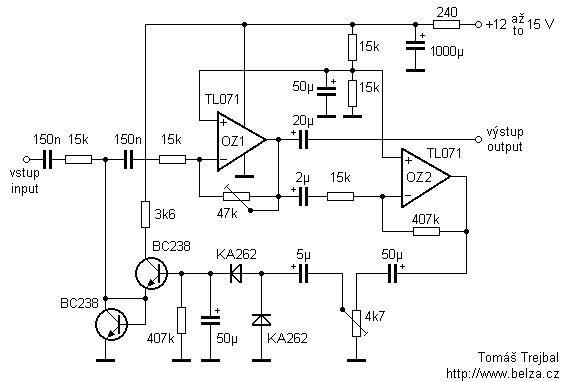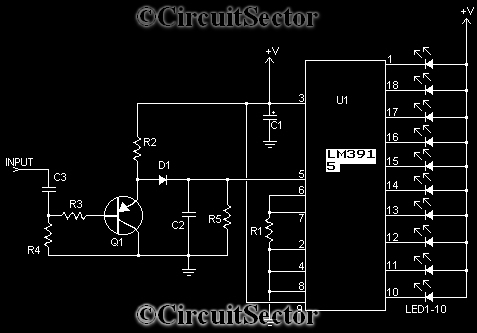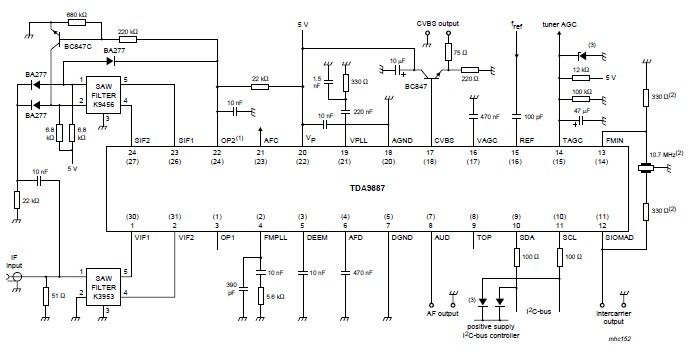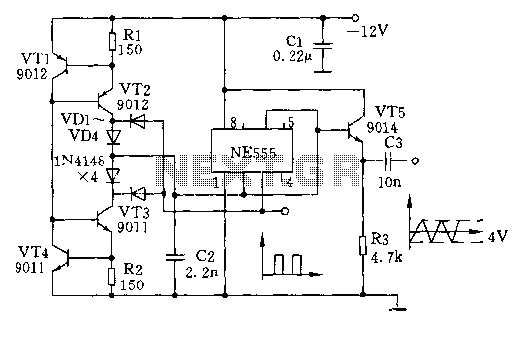
KL-25 type automatic thyristor excitation device circuit

The circuit depicted in Figure 7-32 is designed for an excitation device capable of handling a terminal voltage of 400V and a capacity of less than 75kW for synchronous generator motors, enabling automatic adjustment of excitation. When the generator reaches the rated speed of the prime mover, the SB Kai Lai button should be briefly pressed to initiate self-stimulation and establish the necessary voltage. The RPi manual regulator potentiometer allows for the adjustment of the generator voltage, either decreasing or increasing it as needed. The RP2 component serves to adjust the sensitivity of the device; if excitation oscillation occurs, sensitivity can be reduced as a corrective measure. The shutdown process involves using switch SA to cut off power to the trigger circuit, effectively de-exciting the generator.
The circuit in Figure 7-32 is structured to facilitate the effective regulation of excitation in synchronous generators, which are commonly utilized in various power generation applications. The excitation device operates optimally within specified voltage and power limits, ensuring reliability and efficiency in operation.
The SB Kai Lai button functions as a manual trigger for initiating the self-excitation process. When the prime mover accelerates the generator to its rated speed, pressing this button engages the excitation system, allowing the generator to generate the necessary voltage through self-stimulation. This self-excitation process is critical for maintaining the voltage stability of the generator under varying load conditions.
The RPi manual regulator potentiometer is a key component that provides operators with the capability to fine-tune the output voltage of the generator. By adjusting this potentiometer, the operator can either increase or decrease the voltage output, allowing for real-time responses to load changes or system requirements. This feature is particularly important in applications where voltage stability is crucial for system performance.
Furthermore, the RP2 sensitivity adjustment allows for greater control over the excitation system's response to fluctuations. In scenarios where excitation oscillation is detected, reducing the sensitivity can help stabilize the system, preventing potential damage or inefficiencies. This adaptability is essential in maintaining optimal generator performance.
The shutdown procedure, controlled by switch SA, ensures that the excitation system can be safely deactivated when required. By interrupting power to the trigger circuit, the generator can be de-excited without risking damage to the system, thereby enhancing operational safety and longevity.
Overall, this circuit design provides a comprehensive solution for managing the excitation of synchronous generators, integrating manual controls and sensitivity adjustments to optimize performance and ensure stability in various operational contexts. Circuit shown in Figure 7-32. The excitation device is suitable for terminal voltage of 400V, a capacity of less than 75kW synchronous generator motor for automatic adjustment of excitation. Figure, SB Kai Lai button when the generator is pulled to the rated speed of the prime mover, short press the SB, to make electricity to build several self-stimulation voltage; RPi manual regulator potentiometer, RPi reduced ( or increase), the generator voltage drop (or rise Fan). Adjusting RP2, adjustable sensitivity of the device. If the excitation oscillation, can reduce sensitivity try. Shutdown, the switch SA cutoff, trigger circuit loses power, you can achieve generator de-excitation.
The circuit in Figure 7-32 is structured to facilitate the effective regulation of excitation in synchronous generators, which are commonly utilized in various power generation applications. The excitation device operates optimally within specified voltage and power limits, ensuring reliability and efficiency in operation.
The SB Kai Lai button functions as a manual trigger for initiating the self-excitation process. When the prime mover accelerates the generator to its rated speed, pressing this button engages the excitation system, allowing the generator to generate the necessary voltage through self-stimulation. This self-excitation process is critical for maintaining the voltage stability of the generator under varying load conditions.
The RPi manual regulator potentiometer is a key component that provides operators with the capability to fine-tune the output voltage of the generator. By adjusting this potentiometer, the operator can either increase or decrease the voltage output, allowing for real-time responses to load changes or system requirements. This feature is particularly important in applications where voltage stability is crucial for system performance.
Furthermore, the RP2 sensitivity adjustment allows for greater control over the excitation system's response to fluctuations. In scenarios where excitation oscillation is detected, reducing the sensitivity can help stabilize the system, preventing potential damage or inefficiencies. This adaptability is essential in maintaining optimal generator performance.
The shutdown procedure, controlled by switch SA, ensures that the excitation system can be safely deactivated when required. By interrupting power to the trigger circuit, the generator can be de-excited without risking damage to the system, thereby enhancing operational safety and longevity.
Overall, this circuit design provides a comprehensive solution for managing the excitation of synchronous generators, integrating manual controls and sensitivity adjustments to optimize performance and ensure stability in various operational contexts. Circuit shown in Figure 7-32. The excitation device is suitable for terminal voltage of 400V, a capacity of less than 75kW synchronous generator motor for automatic adjustment of excitation. Figure, SB Kai Lai button when the generator is pulled to the rated speed of the prime mover, short press the SB, to make electricity to build several self-stimulation voltage; RPi manual regulator potentiometer, RPi reduced ( or increase), the generator voltage drop (or rise Fan). Adjusting RP2, adjustable sensitivity of the device. If the excitation oscillation, can reduce sensitivity try. Shutdown, the switch SA cutoff, trigger circuit loses power, you can achieve generator de-excitation.





